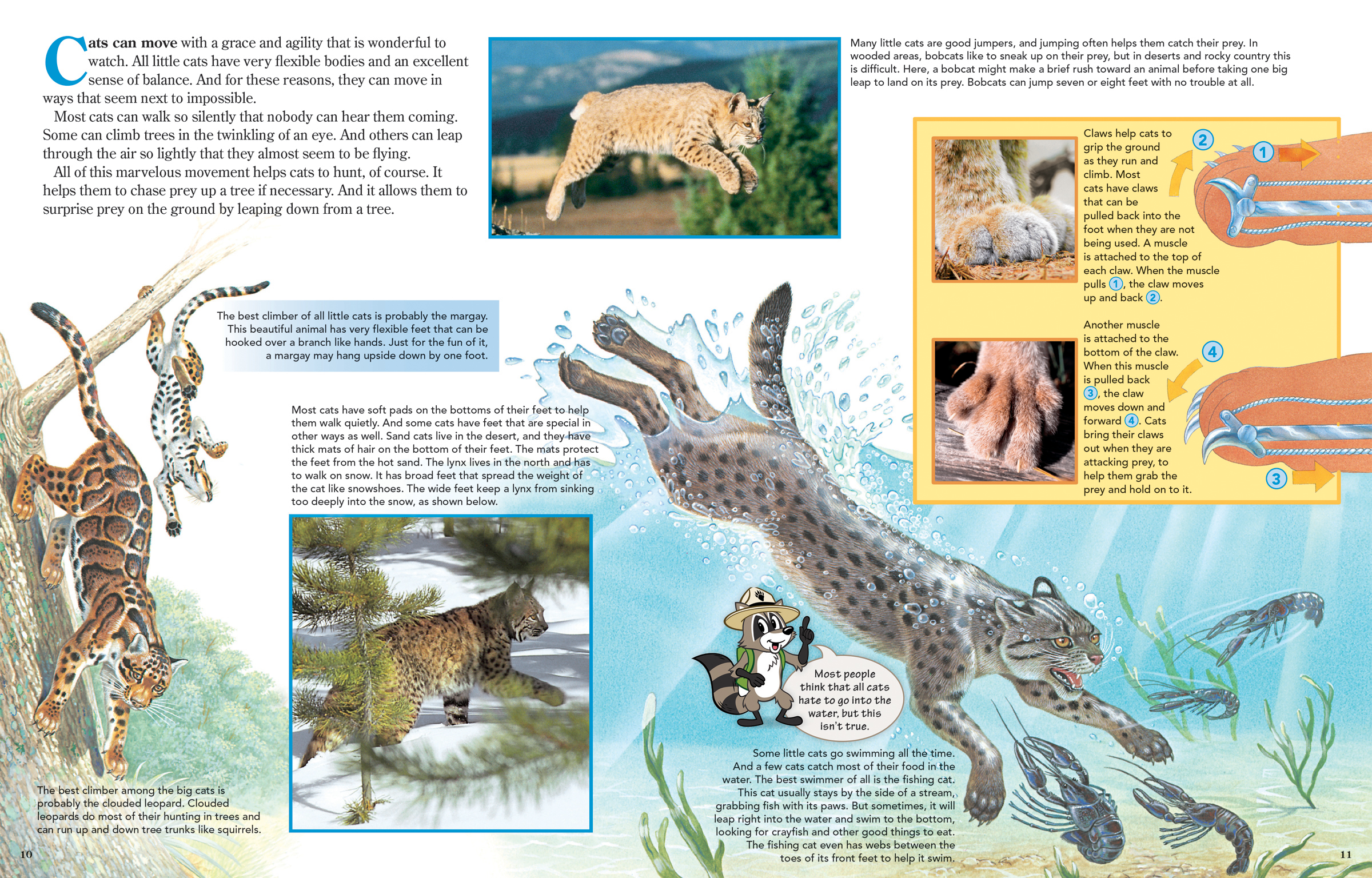
Cats Can Move With Grace
ByCats can move with a grace and agility that is wonderful to watch. All little cats have very flexible bodies and an excellent sense of balance. And for these reasons, they can move in ways that seem next to impossible.
Most cats can walk so silently that nobody can hear them coming. Some can climb trees in the twinkling of an eye. And others can leap through the air so lightly that they almost seem to be flying.
All of this marvelous movement helps cats to hunt, of course. It helps them to chase prey up a tree if necessary. And it allows them to surprise prey on the ground by leaping down from a tree.

The best climber of all little cats is probably the margay. This beautiful animal has very flexible feet that can be hooked over a branch like hands. Just for the fun of it, a margay may hang upside down by one foot.
Most cats have soft pads on the bottoms of their feet to help them walk quietly. And some cats have feet that are special in other ways as well. Sand cats live in the desert, and they have thick mats of hair on the bottom of their feet. The mats protect the feet from the hot sand. The lynx lives in the north and has to walk on snow. It has broad feet that spread the weight of the cat like snowshoes. The wide feet keep a lynx from sinking too deeply into the snow, as shown below.
The best climber among the big cats is probably the clouded leopard. Clouded leopards do most of their hunting in trees and can run up and down tree trunks like squirrels.
Many little cats are good jumpers, and jumping often helps them catch their prey. In wooded areas, bobcats like to sneak up on their prey, but in deserts and rocky country this is difficult. Here, a bobcat might make a brief rush toward an animal before taking one big leap to land on its prey. Bobcats can jump seven or eight feet with no trouble at all.
Claws help cats to grip the ground as they run and climb. Most cats have claws that can be pulled back into the foot when they are not being used. A muscle is attached to the top of each claw. When the muscle pulls, the claw moves up and back.
Another muscle is attached to the bottom of the claw. When this muscle is pulled back, the claw moves down and forward. Cats bring their claws out when they are attacking prey, to help them grab the prey and hold on to it.
Most people think that all cats hate to go into the water, but this isn’t true. Some little cats go swimming all the time. And a few cats catch most of their food in the water. The best swimmer of all is the fishing cat. This cat usually stays by the side of a stream, grabbing fish with its paws. But sometimes, it will leap right into the water and swim to the bottom, looking for crayfish and other good things to eat. The fishing cat even has webs between the toes of its front feet to help it swim.

